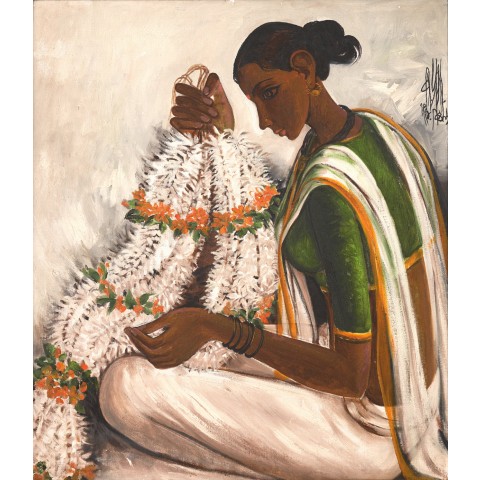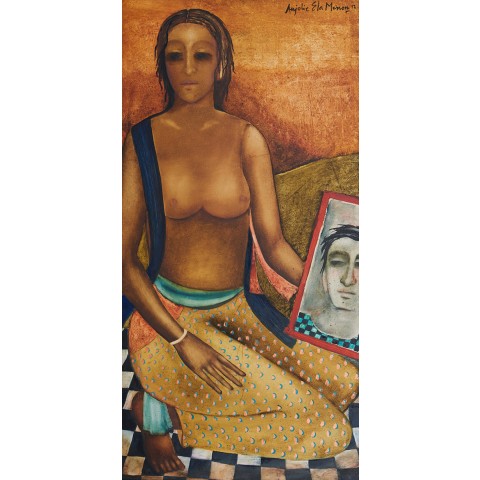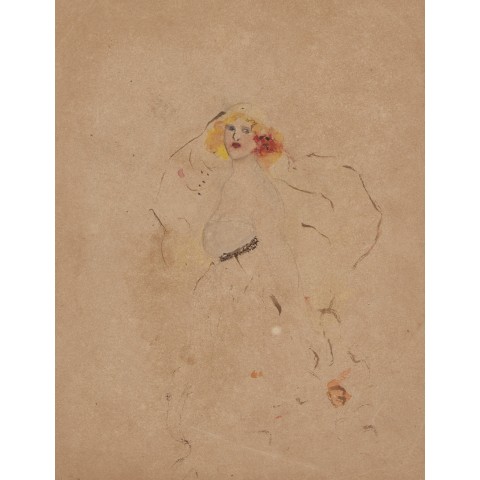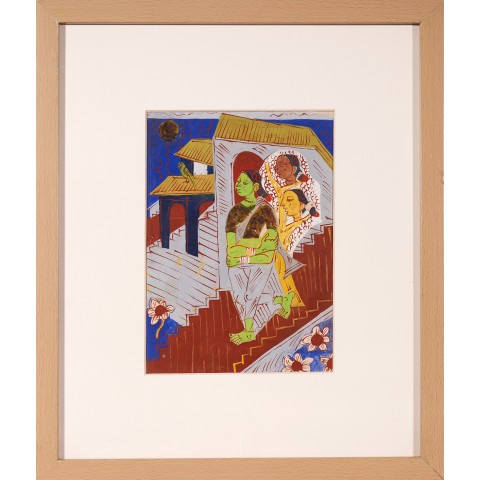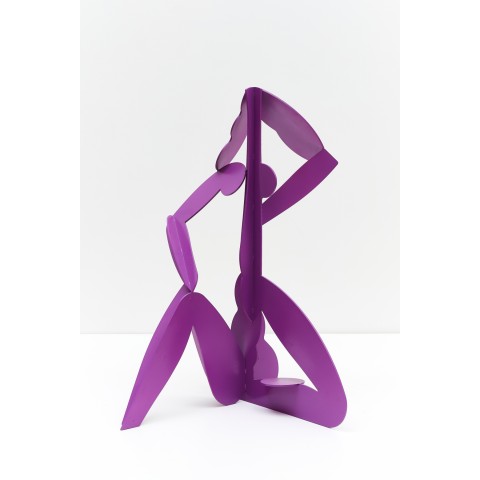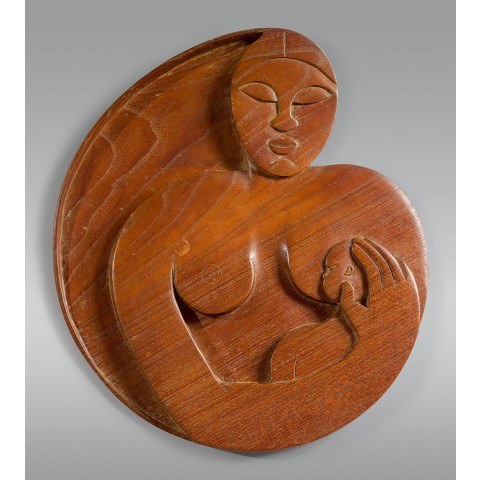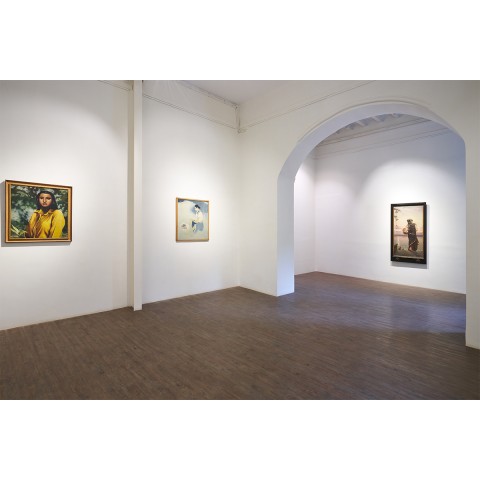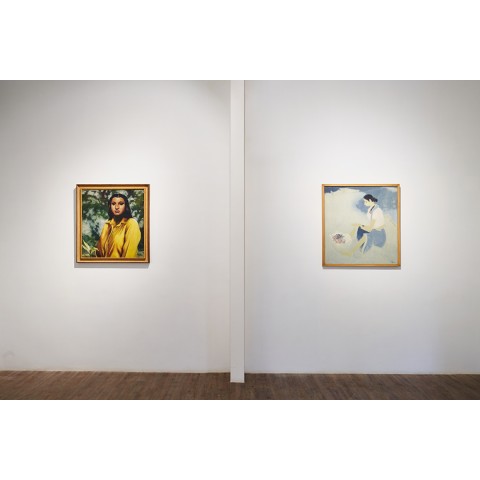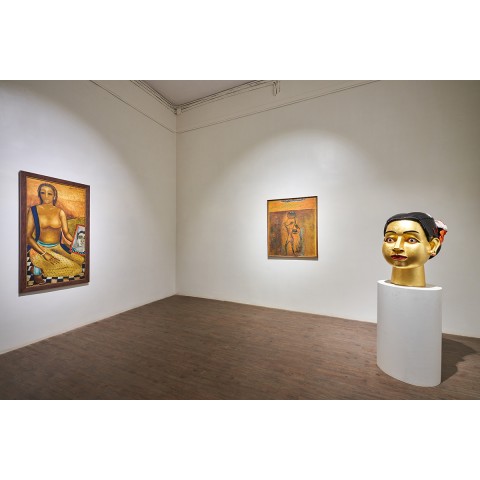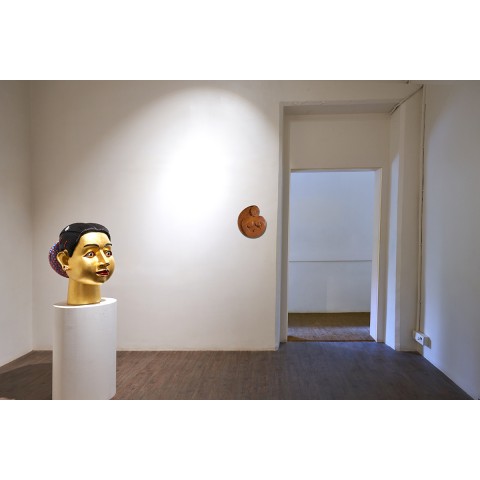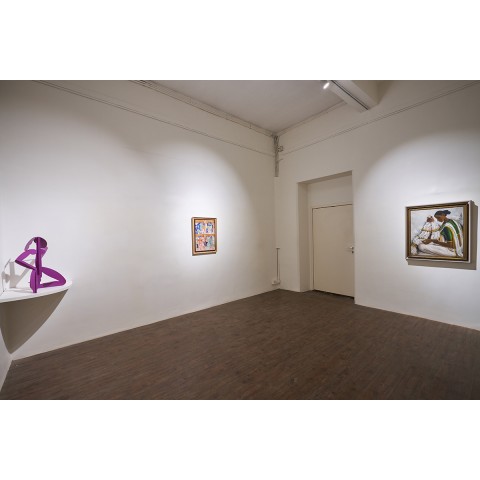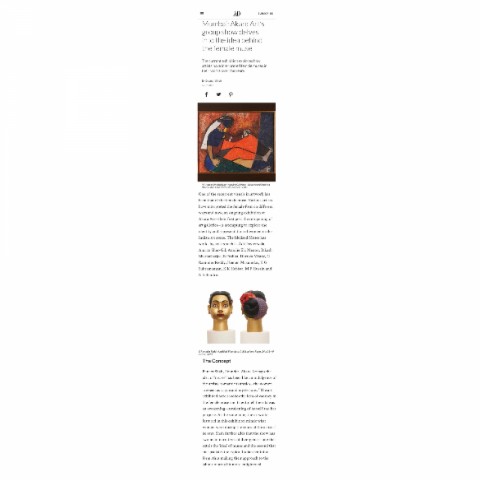
THE IDOLIZED MUSES
June 25 - July 31 , 2021
The women who “inspire” artists are oftentimes shrouded in an empyreal aura. They are a blank canvas primed to channel the creativity of others. They are muses.
The idea of 'muses' dawned in Ancient Greece with the nine Muses - goddesses who inspired artists. As ancient deities of song, dance and memory, these nine Muses gave artists the motivation they lacked to guide them to complete their task. The notion of the artist’s muse carried down from age to age is now associated with mortal women, rather than mythic goddesses.
The women in the Indian paintings, right from Kalighat and Tanjore to Company School works, often feature female deities or “public women” like dancers and courtesans. The male gaze makes their features generic, purposefully avoiding semblance to a living person. Though the legends associated with the muse might indulge our romantic fantasies, it is still vague and mysterious, and it omits matters of the self. The art exhibited here revokes the idea of vacancy in the female muse and tries to tell their tale as an awakening - awakening of herself and her purpose. At the same time, the artworks featured in this exhibition mimic what women were during the times of the artists. One can say that the show has two main narratives of divergence - one that extols the ‘idea’ of muses and the second that encapsulates the typical Indian feminine form. Thus making our approach to the labour of art a bit more enlightened.
The exhibition features artworks by Hemen Mazumdar, MF Husain, Amrita Sher-Gil and Adi Davierwala who want to rouse the ‘muse’ from her void and give her an agency. Whereas sculptures by Dhruva Mistry and G. Ravinder Reddy and paintings by N.S. Bendre and B. Prabha use the female form to reveal her role and status in the history of India. Whether as a muse or as a model, the role of women in Indian society can be experienced through this exhibition.
The feminine form has been one of the most widely inspired subjects that artists across the world have known to recreate at some point in their career. Some have made them their apex muse that catapulted their art career to dizzying heights. Hemen Majumdar and G. Ravinder Reddy are two such artists. Majumdar’s laurels lie with the prurient paintings of women shown semi-clothed with the mere hint of clothing in a wet drape style that accentuated their form. In contrast, Reddy’s depiction of women in art features them as prophetic. His sculptures are larger than life heads and look frontally through their wide-open eyes ready to proclaim omens. Each head that he makes is complex with emblematic designs that are quite heraldic in nature.
Walking amongst the art the viewer is treated to a synergistic relationship between the subject and the artist. What we see in the art of M.F. Husain, Bikash Bhattacharjee and Anjolie Ela Menon are vying for attention between the maker and his muse. Husain’s cubist approach, Bhattacharjee’s realism and Menon’s semi-surrealistic renderings, create a vignette around the female protagonist that push the artist into the background. In comparison, B. Prabha completely cedes to her muses. Her work celebrates the lives of rural women, making them appear larger than life on her canvases.
How a muse is interpreted, interrupted or manufactured on a canvas is entirely in the hands of the artists and yet there are moments when the value of women is given precedence over the opaque depiction of the female form. Adi Davierwala or Dhruva Mistry’s sculptures fall in this category. Davierwala’s mother and child and Mistry’s epoxy sculpture are a study in the interplay of mass, volume and line executed through unique materials. They are both gifted sculptors who innovatively imbibe the influences from their surroundings to give credence to their art and their subject matter.
Done with scintillating spontaneity, K.G. Subramanyam’s portrayal of the woman is not merely expressive and complex but also heroes the vibrancy of their nature. Similarly, Amrita Sher-Gil’s works also highlight a deep engagement with the self and her identity as a woman. Using herself as a visual idiom she moved from communication to calculated inflexion of the yearning within a woman. Likewise, K.K. Hebbar and N.S. Bendre saw their role as artists, to tell the truth about what they saw and felt without any dilution. Hebbar’s and Bendre’s style of art is a combination of impressionistic and expressionistic techniques that tried to draw out the essence of what they perceived - in this case, their observations of women.
This exhibition explores identity and the nature of the representation of women in the Indian art scene. Each artwork selected tries to create a powerful dialogue that challenges the viewer to explore the role of the female muse - should they be mere idols or roots from which we can effect change?
